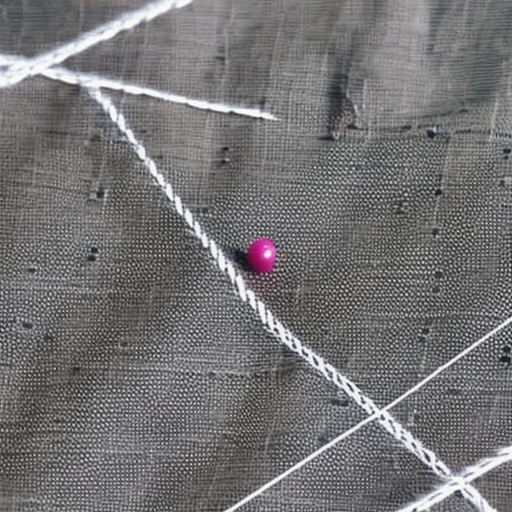Introduction
Sewing tacking stitches is an essential skill for anyone interested in sewing and crafting. Tacking, also known as basting, involves temporary stitches that are used to hold fabric layers or patterns together. Whether you are a beginner or an experienced seamstress, mastering the art of tacking stitches is crucial for achieving accurate and professional-looking results in your sewing projects.
Why Use Tacking Stitches?
Tacking stitches are extremely useful in various sewing scenarios:
1. Securing fabric layers: Tacking stitches are used to hold fabric layers in place before permanent stitching. This ensures precise alignment and prevents fabrics from shifting during the sewing process.
2. Fitting garments: When fitting a garment, tacking stitches allow adjustments to be made easily without the need for permanent stitching. These temporary stitches can be quickly undone if alterations are required.
3. Pattern placement: Tacking stitches help in securing pattern pieces onto fabric, ensuring accurate alignment and preventing shifting while cutting.
How to Sew Tacking Stitches?
Sewing tacking stitches involves a few simple steps:
1. Select the appropriate thread and needle: Choosing the right thread and needle for tacking stitches is important. Opt for a contrasting thread color so that it is easily distinguishable from permanent stitches.
2. Secure the fabric: Pin or temporarily secure the fabric layers together at a few key points to ensure they don’t shift while tacking.
3. Begin stitching: Using a long stitch length, start sewing along the designated line or the edges of the fabric layers. Ensure your stitches are even and straight.
4. Secure the end: Once you have sewn the required length, make a few extra stitches at the end to secure the tacking stitches.
5. Remove tacking stitches: After completing the permanent stitching, carefully remove the tacking stitches using a seam ripper or small scissors.
Conclusion
Tacking stitches are an indispensable technique that every sewing enthusiast should possess. By mastering this skill, you will achieve greater precision, accuracy, and overall improved quality in your sewing projects. So, grab your needle and start practicing this fundamental sewing stitch today!
sewing-stitches-tacking.jpg” alt=””>





Looks interesting! #sewing
Annette Thomas: Need to try this. #handsewing
This post looks like a great way to get a thorough introduction to the different types of stitches used in tacking and how to use them. #sewing #tacking #handsewing
Definitely giving this a try! #sewingDIY
Perfect for learning how to sew. #DIY #Crafting